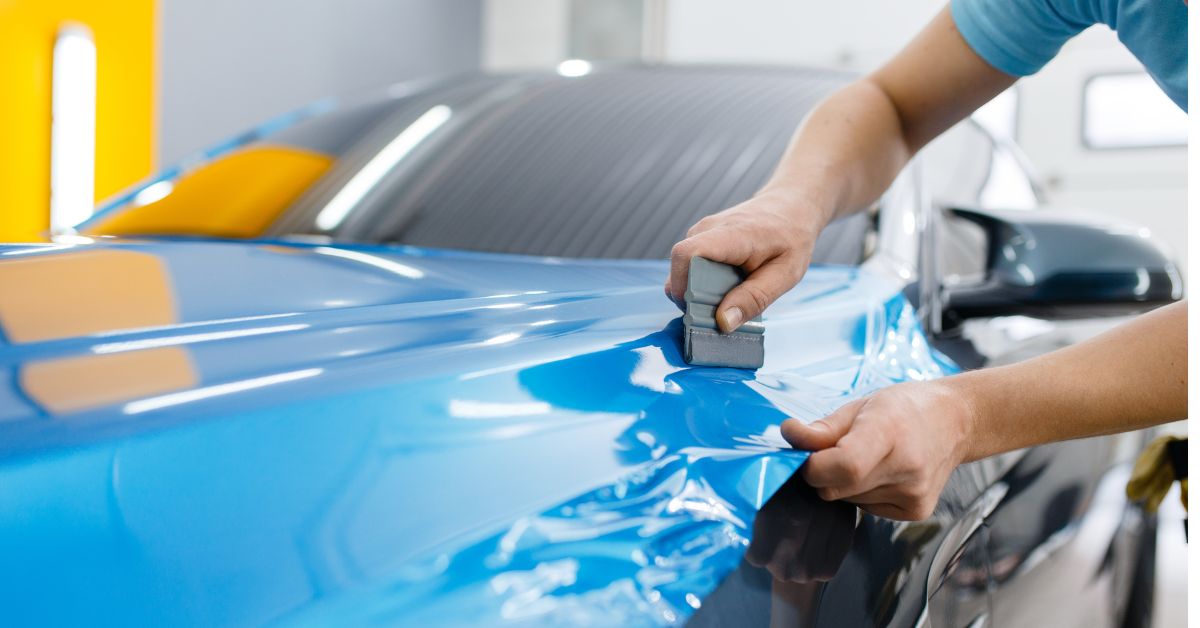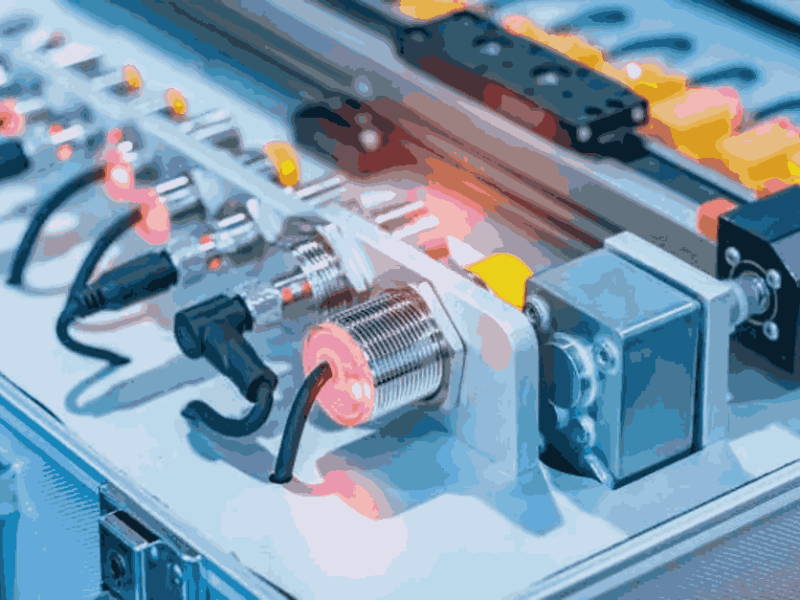Did you know that your vehicle’s paint can be one of the most vulnerable parts of your vehicle to rust and scratches?
Since the paint is in the outer layer of your vehicle, any debris, scratches, or small dings can be bad news. But what if we told you that you could protect your paint against these damaging things?
Auto paint protection film and ceramic coating are two things that you can add to your vehicle. But what are the differences? We’re here to help you with that in this post!
Keep reading to learn more about both paint protection film vs. ceramic coating and how they can help you keep the paint of your vehicle in pristine condition!
Table of Contents
What Is a Paint Protection Film
A Paint Protection Film (PPF), also known as a clear bra or transparent paint film, is a polyurethane film that is applied to the exterior of a vehicle to protect its paint from damage and wear. It is typically used on luxury cars to preserve the pristine condition of the paint and maintain the value of the vehicle.
The film acts as a barrier between the paint and external factors such as rocks, road debris, and UV rays. It is transparent and can be applied to the entire car or certain areas that are more prone to damage.
Paint protection film not only shields the paint but also adds a glossy finish to the car’s surface. It is a popular choice among car owners who want to keep their vehicles looking brand new for years to come.
What Is Ceramic Coating
Ceramic coating is a thin layer of liquid polymer applied to a vehicle’s paint surface to protect it from various elements such as UV rays, dirt, and scratches. It is a popular choice for car owners who are looking for durable and long-lasting protection for their vehicles.
The coating is made up of tiny particles of ceramic, creating a strong and protective surface when applied. It creates a hard and glossy layer that helps minimize imperfections in the paint and provides high resistance to water and chemicals. The ceramic also makes maintenance easier, as it repels dirt and grime, making the car easier to clean.
Aesthetics and Appearance
The paint protection film maintains the original look of the vehicle and can even enhance the glossy finish. Yet, ceramic coatings create a glossy, mirror-like finish that can last for years.
It also adds depth and shine to the vehicle paint, making the vehicle look brand new. While paint protection film is more subtle, the ceramic coating offers a bolder finish that can make a statement. Finally, the choice between the two will depend on personal preference and the desired aesthetic for the vehicle.
Maintenance and Care
Paint protection film (PPF) is a clear film that is easily applied over the paint and is thicker and more durable than thick car coating. It requires regular washing and occasional polishing to maintain its integrity.
Yet, ceramic coating bonds to the paint, creating a protective layer that does not need to be removed or replaced. It still requires regular cleaning, but unlike PPF, it does not need to be polished.
Installation Process
The paint protection film installation process involves cleaning the car’s surface and carefully placing and smoothing out the film onto the desired areas. Yet, ceramic coating is a liquid polymer that is easily applied to the car’s paint and cured with heat. This process requires multiple layers and precision in application to achieve the desired level of protection.
Unlike paint protection film, the ceramic coating also requires a longer curing time before it can be exposed to elements. Both paint protection solutions provide excellent protection for a vehicle, but the installation processes differ, catering to individual preferences and needs.
Resale Value
Paint protection film is considered a more long-term solution, lasting up to 10 years, and can increase the resale value of a car by preserving its original paint. Yet, ceramic coating is a liquid polymer that is easily applied to the paint surface to create a protective layer for up to 2-3 years.
While it enhances the car’s gloss and maintains its shine, it may not have as significant an impact on resale value as PPF.
Removal Process
The paint protection film can be easily removed by gently peeling it off the surface. Yet, ceramic coating bonds with the surface and provides long-lasting protection. The removal process of ceramic coating is more difficult and requires special tools and techniques to be easily used.
It cannot be simply peeled off like paint protection film. It needs to be always polished off carefully to avoid damaging the paint underneath.
Future Trends
In terms of future trends, the paint protection film is expected to become thinner and more transparent. At the same time, the ceramic can improve its durability and resistance against harsh weather conditions.
Overall, both these methods will continue to evolve and provide advanced protection for vehicles in the future.
Expert Opinions
Experts believe that paint protection film provides the highest level of protection but can be more expensive and may change the appearance of the car. Yet, ceramic coating is a liquid polymer that is easily applied to the car’s exterior, creating a protective layer that repels potential damages.
While it is less expensive, experts suggest that it may not offer the same level of protection as paint protection film. Finally, it is recommended to consult with a professional and assess the specific needs of your vehicle to make an informed decision.
Learn About Paint Protection Film vs. Ceramic Coating Today
The difference between paint protection film vs. ceramic coating offers valuable benefits in protecting your vehicle’s paint from damage. Yet, they have their own unique features and limitations.
If you want maximum protection, consider combining both methods. Be sure to consult with a professional to determine the best solution for your specific vehicle. Don’t wait; protect your car today!
If you find this helpful and want to read more great content, check out our latest blog posts now!


